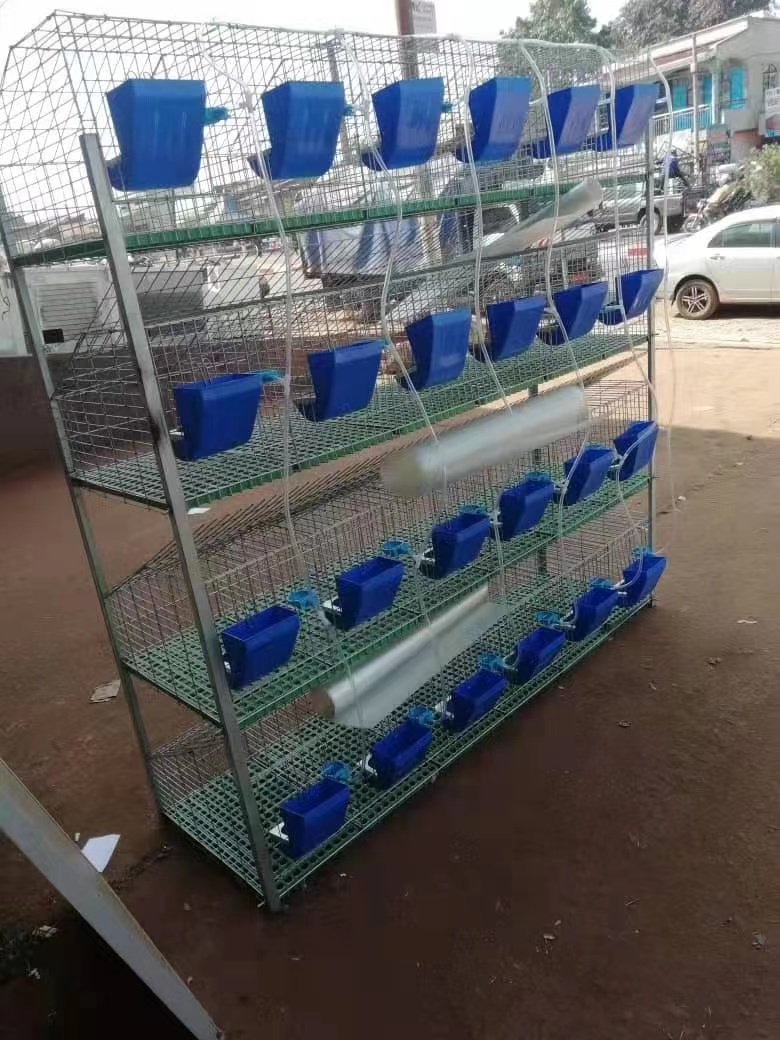Exploring Efficient Housing Solutions for Poultry Farming in Layer Cages
Sep . 28, 2024 15:31 Back to list
Exploring Efficient Housing Solutions for Poultry Farming in Layer Cages
The Rise of Chicken Layer Cages in Modern Poultry Farming
With the ever-increasing global demand for eggs, poultry farming has evolved significantly in recent years. One of the most significant advancements in this industry is the use of chicken layer cages. These innovative housing systems have revolutionized the way eggs are produced, providing efficiency, improved animal welfare, and high productivity.
Understanding Chicken Layer Cages
Chicken layer cages are specially designed enclosures that house hens for the purpose of egg production. Unlike traditional farming methods where chickens roam free, these cages are organized in rows or tiers, maximizing the use of space. The primary goal of these cages is to ensure that each hen has enough room to lay eggs while minimizing disease transmission and promoting better management of the flock.
Advantages of Chicken Layer Cages
1. Space Efficiency One of the most significant benefits of chicken layer cages is their space efficiency. By stacking cages vertically, farmers can significantly increase the number of hens per square foot, leading to higher production levels on smaller plots of land. This is especially beneficial in urban areas where land is limited.
2. Health and Hygiene Maintaining the health of the flock is critical for any poultry operation. Layer cages provide a cleaner environment for hens as manure is collected below the cages, reducing the likelihood of disease spread among birds. Additionally, cages can be easily cleaned and sanitized, further promoting the well-being of the hens.
3. Controlled Environment Chicken layer cages enable farmers to exert more control over the environment in which the hens live. Factors such as temperature, ventilation, and lighting can be managed more effectively. This control not only contributes to the well-being of the hens but also ensures consistent egg production year-round.
chicken layer cage

4. Less Aggression and Cannibalism In many traditional farming systems, hens can exhibit aggressive behavior towards each other, sometimes leading to pecking or cannibalism. Cage systems can help mitigate this behavior as hens have designated spaces, reducing stress and competition for resources.
5. Higher Egg Yield Studies have shown that hens raised in layer cages tend to produce more eggs than those in free-range systems. The controlled environment and reduced stress contribute to higher productivity levels, making layer cages a preferred choice for commercial egg producers.
Considerations and Controversies
Despite their many advantages, the use of chicken layer cages is not without controversy. Animal welfare activists have raised concerns about the ethical implications of caging hens, arguing that it restricts their natural behaviors such as roaming, foraging, and nesting. In response to these concerns, some farmers are transitioning to enriched cages that allow more space and better access to nesting areas, thus providing a compromise between productivity and animal welfare.
Moreover, legislative changes in various countries have led to stricter regulations on cage size and the conditions in which hens are kept. This has pushed the poultry industry to innovate and improve the living conditions of hens while maintaining high standards of egg production.
The Future of Poultry Farming
Looking ahead, the poultry industry is likely to see significant changes as technology continues to advance. From automated feeding systems to improved climate control within layer cages, innovations will keep driving efficiency and productivity. Additionally, consumer preferences are shifting towards more humane farming practices, prompting an industry-wide reevaluation of farming methods.
In conclusion, chicken layer cages represent a significant shift in poultry farming, combining efficiency with improved health management for hens. While concerns about animal welfare remain prevalent, the ongoing evolution of cage systems reflects a commitment to finding a balance between productivity and ethical farming practices. The future of poultry farming will undoubtedly involve a blend of technological innovation and compassionate care for the animals that contribute to our food supply. As the industry adapts to changing consumer demands and regulatory frameworks, chicken layer cages will continue to play a pivotal role in meeting the growing demand for eggs efficiently and sustainably.
-
Hot Sale 24 & 18 Door Rabbit Cages - Premium Breeding Solutions
NewsJul.25,2025
-
Automatic Feeding Line System Pan Feeder Nipple Drinker - Anping County Yize Metal Products Co., Ltd.
NewsJul.21,2025
-
Automatic Feeding Line System Pan Feeder Nipple Drinker - Anping County Yize Metal Products Co., Ltd.
NewsJul.21,2025
-
Automatic Feeding Line System - Anping Yize | Precision & Nipple
NewsJul.21,2025
-
Automatic Feeding Line System - Anping Yize | Precision & Nipple
NewsJul.21,2025
-
Automatic Feeding Line System-Anping County Yize Metal Products Co., Ltd.|Efficient Feed Distribution&Customized Animal Farming Solutions
NewsJul.21,2025






